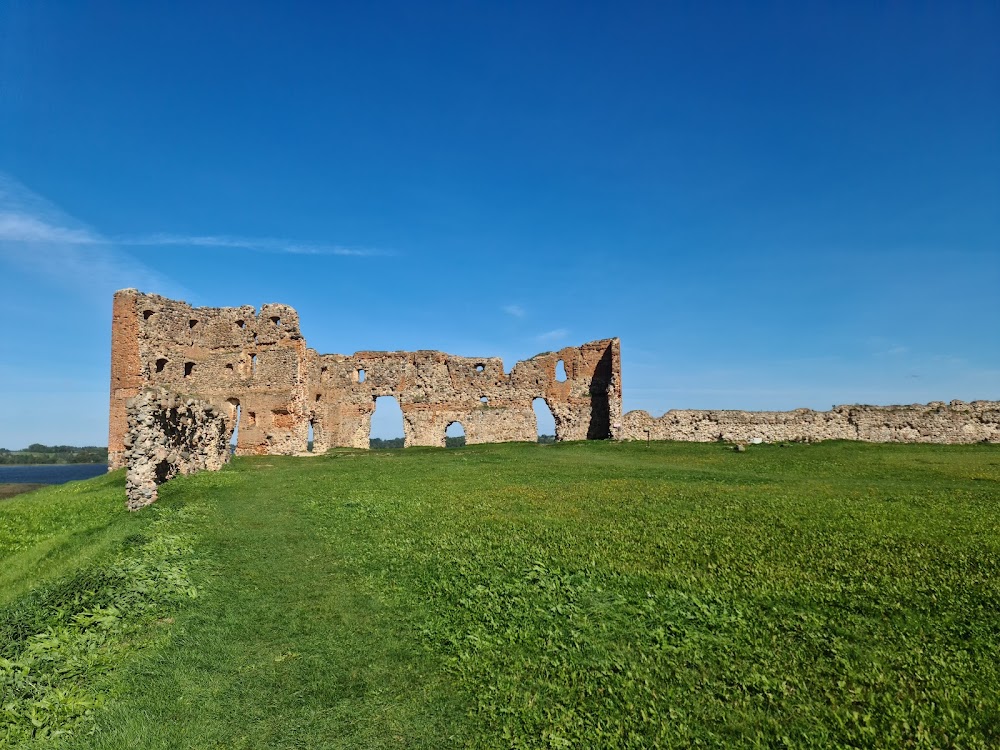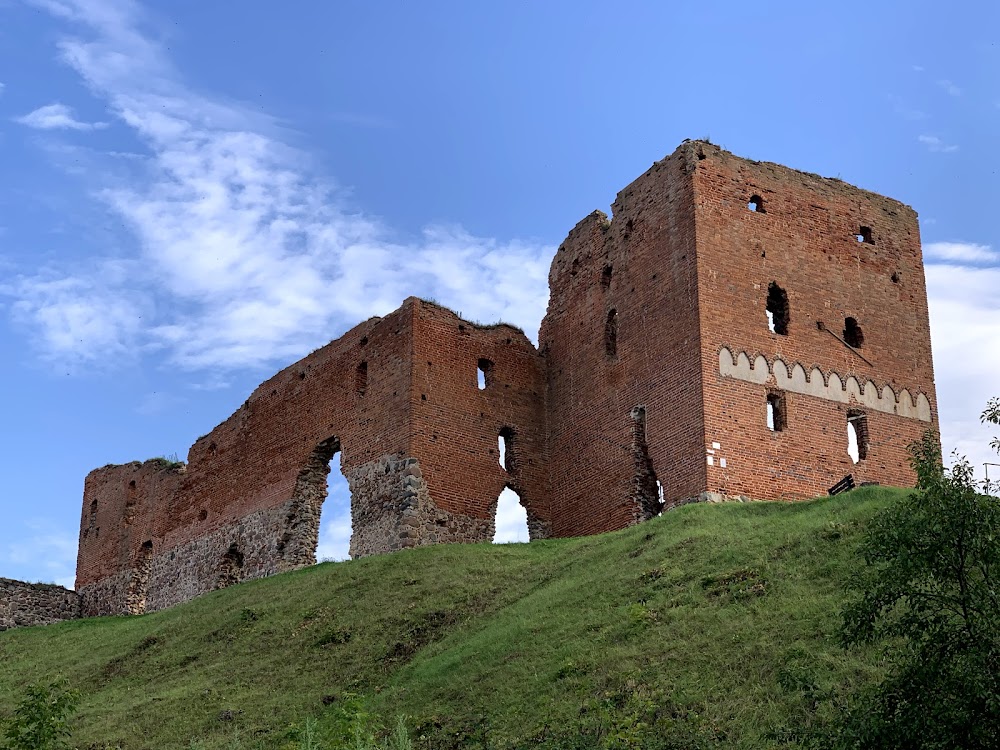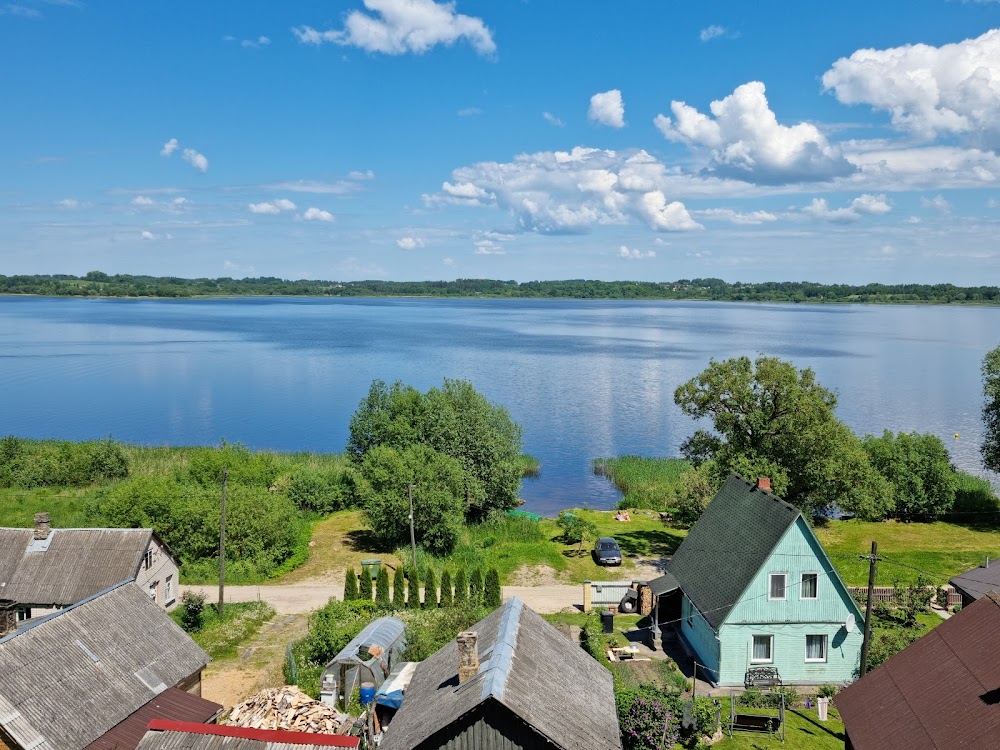Ludza Medieval Castle Ruins (Ludzas viduslaiku pils drupas)
Overview
Ludza Medieval Castle Ruins, also known as Ludzas Viduslaiku Pilsdrupas, are a captivating historical gem nestled in the charming town of Ludza within Latvia's Viļāni Municipality. These ruins are a testament to the grand fortifications established by the Livonian Order, a faction of the Teutonic Order, during the 14th century.
The construction of Ludza Castle began around 1399, driven by the Livonian Order's mission to Christianize the Baltic region. Recognizing the strategic importance of Ludza, situated along critical trade routes and serving as a defense line against incursions from the Grand Duchy of Lithuania and other local tribes, they sought to create a formidable fortress to safeguard their territories and assert their authority.
The castle itself was an awe-inspiring structure perched atop a hill between two lakes. With four main towers and robust stone walls, it was designed to withstand sieges and deter attackers. The thick walls, some measuring up to 2 meters in thickness, showcased the remarkable engineering prowess of the medieval era. Within its confines, the fortress boasted living quarters, a chapel, storage rooms, and even a well, ensuring self-sufficiency during protracted conflicts.
Over the centuries, Ludza Castle played witness to numerous battles, notably during the Livonian War in the late 16th century. The region became a battleground for various European powers, culminating in the siege of the castle by Russian forces led by Ivan the Terrible in 1577, marking the onset of its gradual decline.
The 17th century brought further challenges as the castle suffered extensive damage during the Polish-Swedish wars. Changing hands multiple times, it became a target for looting and conflict. By the end of the century, Ludza Castle began to lose its military significance, ultimately succumbing to neglect and disrepair.
Despite its decline, the castle remained a focal point for the local community. Over the years, locals repurposed stones from the ruins to construct houses and other structures in the surrounding area.
Today, visitors to Ludza Castle Ruins can explore picturesque remnants of the past. The stone walls still stand, allowing one to envision the once-imposing towers that dominated the landscape. Archaeological excavations have uncovered numerous artifacts, shedding light on the daily lives and struggles of those who called the castle home centuries ago.
Ludza Castle Ruins have transformed into a popular tourist destination, enticing history enthusiasts and casual visitors alike. The site offers a fascinating glimpse into Latvia's medieval past, serving as a poignant reminder of the region's intricate history of conflicts and cultural evolution.
Efforts to preserve these ruins have been ongoing, with local authorities and historians recognizing their educational and cultural significance. Interpretive signs and guided tours enhance the visitor experience, providing valuable insights into the ruins and the history they encapsulate.
In recent years, the ruins have also emerged as a vibrant venue for cultural events, including medieval reenactments, concerts, and festivals, that breathe life into the rich history of Ludza Castle in a unique and engaging manner.
Ludza Medieval Castle Ruins stand as a lasting testament to the architectural brilliance and historical importance of the Livonian Order's presence in Latvia. Though in ruins, this site remains a vital connection to the past, helping to preserve the heritage and stories of the people who once lived and fought within its walls.






